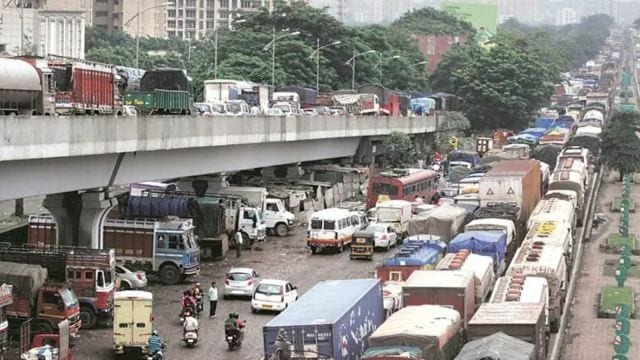Click here to join Express Pune WhatsApp channel and get a curated list of our stories
At media workshop, experts call for greater awareness on greater road safety
At a media workshop organised by United Nations Children's Fund (UNICEF) on Monday, a special session on road safety highlighted that India records over 150,000 road deaths every year, with children and young people among the most affected.
 Maharashtra has recorded 36,084 road crashes and 15,335 fatalities in 2024, averaging 99 crashes and 43 deaths per day. (File Photo)
Maharashtra has recorded 36,084 road crashes and 15,335 fatalities in 2024, averaging 99 crashes and 43 deaths per day. (File Photo)Pune, Nashik and Nagpur are among the ten districts that account for over 50% of state fatalities as per recent data from Maharashtra transport commissionerate and highway traffic police. Others include Ahmednagar, Solapur, Thane, Chhatrapati Sambhaji nagar, Jalgaon, Satara, and Beed.
At a media workshop organised by United Nations Children’s Fund (UNICEF) on Monday, a special session on road safety highlighted that India records over 150,000 road deaths every year, with children and young people among the most affected.
Children and adolescents (0–19 years) represent roughly 11 percent of all road fatalities in Maharashtra (Ministry of Road Traffic and Highways MoRTH 2024) and according to the UNICEF – Education Department Survey (2024), only 29 percent of pillion-riding children wear helmets while less than 50 percent of students consistently use zebra crossings and school transport vehicles often lack seatbelts, emergency exits, and trained attendants.
“Urban crash data (NCRB 2023) indicates that child pedestrian injuries are highest in Pune, Mumbai, and Nagpur,” Dr Syed Hubbe Ali, Health Specialist, UNICEF Delhi, said that while pointing out that road traffic injuries are the leading cause of death among 5–29-year-olds, and over 50 percent of victims are pedestrians, cyclists, or motorcyclists.
“Maharashtra’s persistent position among India’s top three states for road-traffic fatalities underscores both the magnitude of the challenge and the urgency for sustained, systemic action,” he said.The datasets from the Transport Commissionerate, Highway Traffic Police, and MoRTH clearly point to predictable and preventable risk patterns—notably over-speeding, evening-hour crashes, and high-fatality corridors—that require targeted, multi-sectoral intervention.
Maharashtra has recorded 36,084 road crashes and 15,335 fatalities in 2024, averaging 99 crashes and 43 deaths per day. The state ranks 3rd nationally in total fatalities, with NH corridors accounting for 37% and overspeeding contributing to over 65% of fatal crashes. Child and adolescent fatalities constitute 11% of all deaths, with low helmet compliance (29%) among young riders.
Maharashtra needs to prioritise evidence-based enforcement and engineering—focusing on the top 20 high-fatality corridors and high-risk urban zones, child- and youth-centered safety education through the School Health and Wellness Programme among other measures to achieve a 50% reduction in road fatalities by 2030 is both an attainable and necessary goal, experts said. Nilesh Gangaware, technical consultant for road safety, UNICEF also spoke about the plans to urge the state to consider road safety as a major health concern in the school and wellness programmes.
Meanwhile the day-long state-level Capacity Building Workshop held on ‘Emerging Adolescent Health Priorities: Health, Cervical Cancer, Nutrition and Road Safety’ also had several experts discussing in detail about the need to promote awareness on these critical issues.
Dr Mrudula Phadke, Senior Advisor to the Maharashtra government and United Nations Children’s Fund (UNICEF) made a strong case for investment in ‘undernourished’ and often `overlooked’ adolescent girls.
“Adolescence is a window of opportunity to build a foundation for lifelong health. Good nutrition during these years not only shapes physical growth but also strengthens learning,emotional resilience, and future productivity. Investing in adolescent nutrition means investing in the nation’s human capital. Our goal must be to make healthy diets accessible, affordable, and aspirational — turning awareness into daily practice and opportunity into long-term well-being,” Dr Phadke said.
Rajalakshmi Nair, Nutrition Specialist, UNICEF also observed that investing in adolescents (10–24 years) yields returns in the short term (improved adolescent health), medium term (healthier adult years), and long term (benefits for the next generation) and benefits for the next generation. “We can say that translates to a triple dividend. It is a need of an hour to prioritise adolescents, central to the development agenda. For adolescents, nutrition is not just about food — it is about creating a nurturing environment for healthy growth and development, resulting in optimal learning, skilling and ability to make informed choices. It is only achieved through a multisectoral approach through adolescents participating in a larger agenda of development,” Nair added.
Earlier, Sanjay Singh, Chief of UNICEF Maharashtra, Dr Mangesh Gadhari, Health Specialist, UNICEF,.Sandhya Nagarkar, Assistant Commissioner, Integrated Child Development Services (ICDS), and others spoke on the occasion.
Click here to join Express Pune WhatsApp channel and get a curated list of our stories







